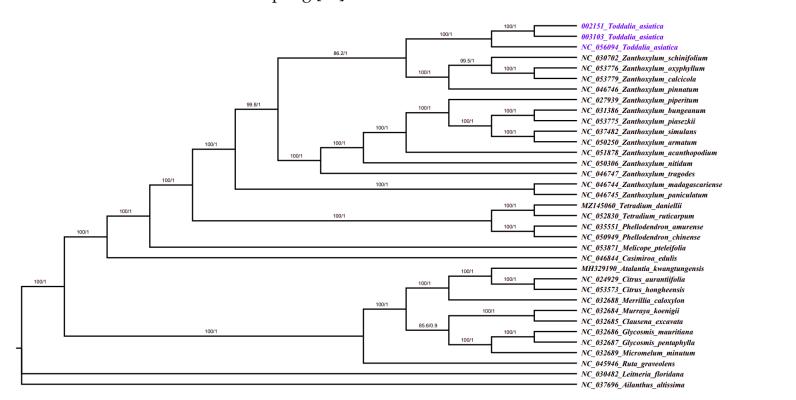Moreover, biogeographic analysis indicates an Asian origin of Toddalia species and later dispersal to Africa and Madagascar. The maxent models shows that Asia would have a favorable climate for Toddalia species in the future. In Africa, there will be contraction and expansion of the favorable areas for these species.
This work provides insight into the availability of the cp genomes in Rutaceae, which could be helpful for further population genetics and biogeographic studies of these species.
Kenyan student Elizabeth Syowai Mutinda is the first author. Professor HU Guangwan is the corresponding author. Several students from the group participated in the study.

Gene map of Toddalia plastomes (Image by WBG)

A sliding window analysis of nucleotide variability (Pi) values of different regions of Toddalia (Image by WBG)

Comparison of the borders of large single copy (LSC), small single copy, (SSC), and inverted repeat (IR) regions among the Toddalia plastomes (Image by WBG)

Phylogenetic tree construction of 35 taxa using maximum likelihood (ML) and Bayesian inference (BI) methods using 79 protein-coding genes (Image by WBG)

Maps showing distribution modeling for Toddalia asiatica for the years 2050 and 2070 (Image by WBG)




